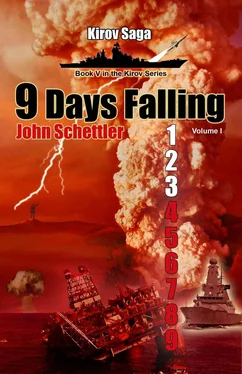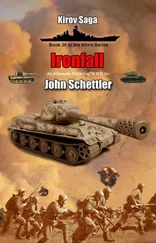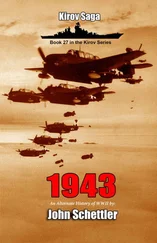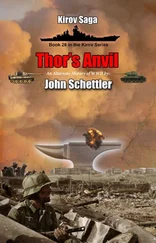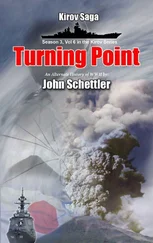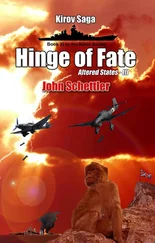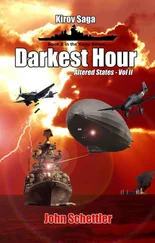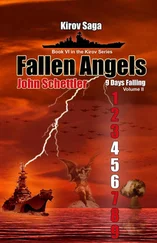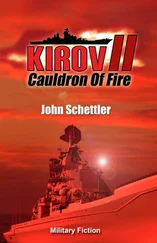The strategy, of course, was not to concentrate his force on American military assets. Oh, he would use the new Russian missiles to threaten the American carriers, but otherwise engaging the U.S, military was fruitless. No, instead he would fling his arsenal of Shehabs at the major oil terminals on the oil rich states to the south. He would strike at America by cutting off the flow of her precious oil business. There was no other way. But how long would it be before the American planes swept his meager air force aside and pounded his missile sites to dust? Saddam had played cat and mouse with his mobile missile systems in the desert for many weeks, but the American planes and missiles were much better now.
And even though Iran had been making efforts at strengthening its air defense systems in recent years, taking delivery of more advanced Russian made Tor-M1 and S-300 systems, they were too few and too widely dispersed to provide a credible defense. The system had weak low altitude radar coverage, no overlapping radar network, shaky command and control systems, and inadequate electronic counter-countermeasures. So the so called ‘exercises,’ and all his bravado today before the press, was more talk than anything he could put to action. The surprises, he knew, would not come from his fixed wing aircraft, or from his ability to fend off a determined enemy air attack, but from the considerable missile forces Iran had been building over the last decade. The best defense, he knew, was a good offense. Iran could make any attack against its homeland a painful option for the aggressors.
The long war with Iraq had also proved the folly of trying to wage war with conventional ground forces, particularly against American equipped enemies. Millions of young Iranian men had died, some in suicidal WWI style human wave assaults against the prepared Iraqi defenses. Even the inferior Russian built T-55 and T-72 tanks Saddam had in inventory were enough to repulse such attacks, particularly when backed up by chemical weapons, napalm, artillery fire, wire, mines and a host of other defenses. God rot the soul of Saddam, he thought. The General’s son, a young Revolutionary Guardsman, had died in such a battle. Mighani passed several moments, imagining the last moments for Saddam. He would have liked to have been there, watching him hang.
Yes, the lesson of that long war was evident. The one weapon that seemed to in any way surprise the enemy was the short range ballistic missile. Capable of delivering large warheads over great distances, with reasonable accuracy, the missiles put the enemy urban centers into the war theatre and acted as a supreme weapon of terror. The famous ‘scud wars’ in the Gulf were a perfect example. They were far more effective than believed, and very few SCUDs had been successfully intercepted back then—not even by the American Patriot system. He knew those defenses were better now, but the Chinese had just demonstrated what a massed missile barrage could do to Taiwan.
So when he watched his old fighter planes perform their low level fly-bys, he knew that there would be little he could really do to defend against a determined American or Israeli air campaign. But we can hit back, he mused, not long, but long enough. The single missile in the belly of a British tanker this morning put a fine point to it. Only a very few of his planes or missiles would have to reach their targets to have a dramatic and devastating effect—a very few. And there were some weapons he held close to his chest, the real surprises should the Americans ever be so bold as to strike mother Iran. He would get a chance to play his hand sooner than he hoped.
The phone rang. An adjutant handed him a new telex. The first page was obvious, though insulting. The Americans were over-flying Iranian soil with their damnable drones! It was time stamped thirty minutes ago. Three had made close approaches to Abu Musa in the Gulf, where a small outlying airfield was maintained with a few maritime patrol boats. He could smell the lies they would soon be vomiting in the UN. Then he read the second page, time stamped ten minutes later. It was signed by Iranian Defense Minister Mostafa Mohammad Najjar and marked with the highest level of urgency:
US MARINES HAVE LANDED ON ABU MUSA
STAND READY
TheMarines were indeed landing on Iranian soil, storming out of their hovercraft and helos covered by a phalanx of F-16 fighter groups that had massed over the Persian Gulf like a swarm of angry locusts. It took little time to occupy the tiny island of Abu Musa, where the leading companies in the first assault wave brushed aside light resistance from the small island garrison around the harbor, while other forces swooped down from helicopters to secure the island’s small air strip.
The assault groups quickly secured the tiny harbor and quay where they had hoped to find the proverbial “smoking gun” in a rogue Iranian attack boat. Nothing was there. By the time Colonel Andar was ignominiously led off to interrogation by his Marine captors, the small attack craft that had skewered Princess Royal was deep below the oil-dark waters of the Persian Gulf. The frogmen had rendezvoused quietly with a small Iranian sub, which had then skirted off towards the Iranian territorial waters of the northern Gulf coast.
All across Iran the aging Iranian air force was scrambling to put planes in the air, expecting their airfields to come under blistering attack by cruise missiles and stealthy aircraft launched by the U.S. from its carrier groups and Gulf region bases. None came. The American response had been deliberately scaled to the simple objective of seizing Abu Musa to try and track the source of the terrorist attack, while writing a spectacular headline and poignant message to the Iranian Government at the same time.
An uneasy calm settled over the Gulf region, but tensions ratcheted high as radar crews squinted at their screens in anticipation of the next retaliatory wave of incoming strikes. Missiles in Iran were fueling at a frantic place, and mobile launchers emerged from their hiding bunkers to prepare their deadly game of shoot and scoot. But for the moment, however, the missiles stayed on their launch pads.
The hours ticked by, and tensions slowly subsided. One by one the Iranian air force planes in the initial scramble defense waves were running low on fuel and returning to their bases. Too few rose to replace them, as the initial wave had sent more than 80% of the inventory aloft. In spite of recent drills, only 75 of the 125 aging F-4 Phantoms and F-5 Tigers were air worthy. Of these 60 had flown in the first alert wave, leaving fifteen to take their place in the hot late afternoon sun. There were still five old F-14 Tomcats and ten Mig 29s available as well.
All across the region radars were humming as they scoured the skies for any sign of incoming enemy aircraft. Yet nothing was seen. Then, a few minutes before dusk, the newly installed Syrian early warning radar facility atop Lebanon's highest peak at Mount Sannine, went dark. There were crucial minutes of confusion at Syrian Air Defense Command before they realized the facility had been destroyed by a missile. The source was not discovered, but the outpost had been hit by an Israeli Popeye Turbo cruise missile launched from a submarine in the Eastern Med. Other missiles were already on their way to strike similar early warning outposts in Iran, this time launched by Israeli submarines in the Persian Gulf. The hawkish government, always ready to exploit any opportunity, had chosen this delicate moment to launch their long planned air strike against new suspected Iranian nuclear facilities!
Even as the first alert wave of Iranian aircraft were landing for refueling, two Israeli air groups flying F-15 I and F-16 I fighters were being led by radar suppressing G-550 Suter and NCCT aircraft on a mission targeting uranium enrichment facilities in Qom and Natanz, as well as the heavy water reactor at Arak, the new facility at Bushehr, and the gas storage complex at Esfahan. The Israeli attack would look like a joint operation with the Americans, though Israeli diplomats had not revealed their intended strike date to politicos in Washington until the planes were well on their way. It was a necessary formality, for the Americans had supplied most of the KC-707 air refueling tankers and liberal allotments of missiles and bunker busting bombs that would be used in the attack.
Читать дальше
